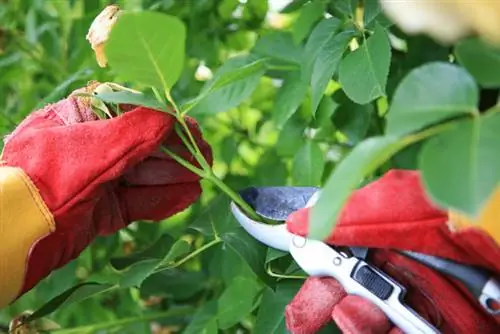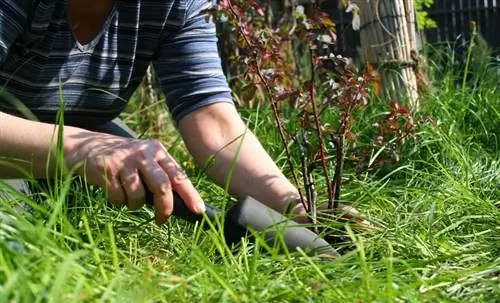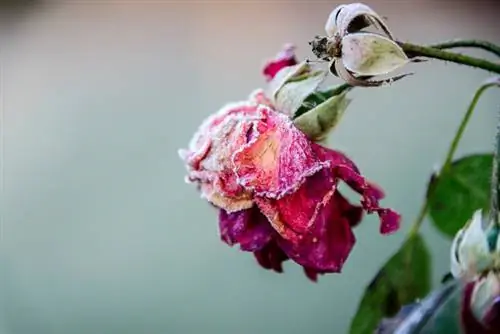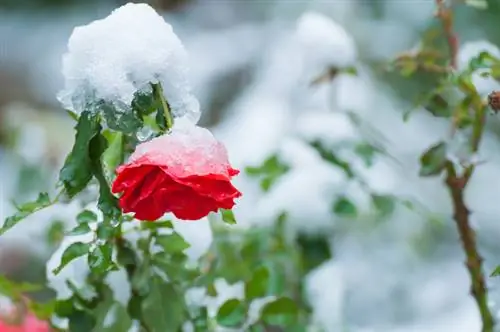- Author admin [email protected].
- Public 2023-12-16 16:46.
- Last modified 2025-01-23 11:20.
Rambler (from English “to ramble”, i.e. “tendrils”) beautify any garden and turn dead trees, bare walls and similar unsightly places in the garden into wildly romantic focal points in no time. Their strong growth and lush flowers are typical characteristics of rambler roses, of which there are numerous varieties. Their flexible shoots conquer every free centimeter - so it's no wonder that pruning is necessary from time to time. However, how and when you can or should cut back your rambler rose depends primarily on the variety.
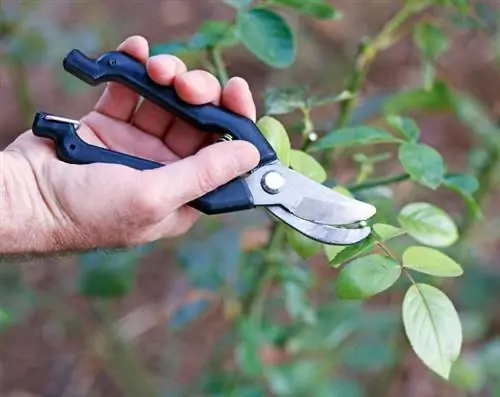
How and when should you cut rambler roses?
Once-flowering rambler roses should be thinned out after flowering by removing old or dead shoots. Varieties that bloom more often require pruning in the first few years to promote branching and then an annual pruning in spring.
Cutting single-blooming rambler roses
Once-flowering ramblers, as the name suggests, only show their flowers once a year. They do not replant, even if the flowering period can last a few weeks depending on the variety. These ramblers mainly bloom on the perennial shoots, which is why they should be cut as little as possible. All you need to do is make a careful thinning cut in which you remove dead shoots and those that are too old - you can recognize this by the fact that only a few flowers are forming on them. The best time for such a cut is immediately after flowering, although you can also cut away any parts that have faded. If the plant gets too tall, you can cut it down. However, keep in mind that it will only grow back stronger afterwards.
Cutting rambler roses that bloom more often
In contrast to the once-blooming varieties, the more frequently blooming rambler roses develop their flowers on the young shoots. Theoretically, the more vigorously you prune these roses, the more profusely they would bloom. In fact, these roses should be cut back, especially in the first few years, so that they develop strong branches. On the other hand, you can let older plants grow and only carry out pruning in early spring to remove sick, weak or dead shoots. Since rambler roses bloom more often, i.e. H. If a second flower develops, you should always remove anything that has bloomed. In this way you stimulate the formation of new flowers.
Tip
Roses and therefore rambler roses should definitely be cut back with special rose scissors (€21.00 on Amazon) or at least with sharp and freshly disinfected garden shears to avoid bruising and similar injuries. In this way you prevent the penetration of pathogens such as fungi, to which roses are unfortunately quite susceptible.



